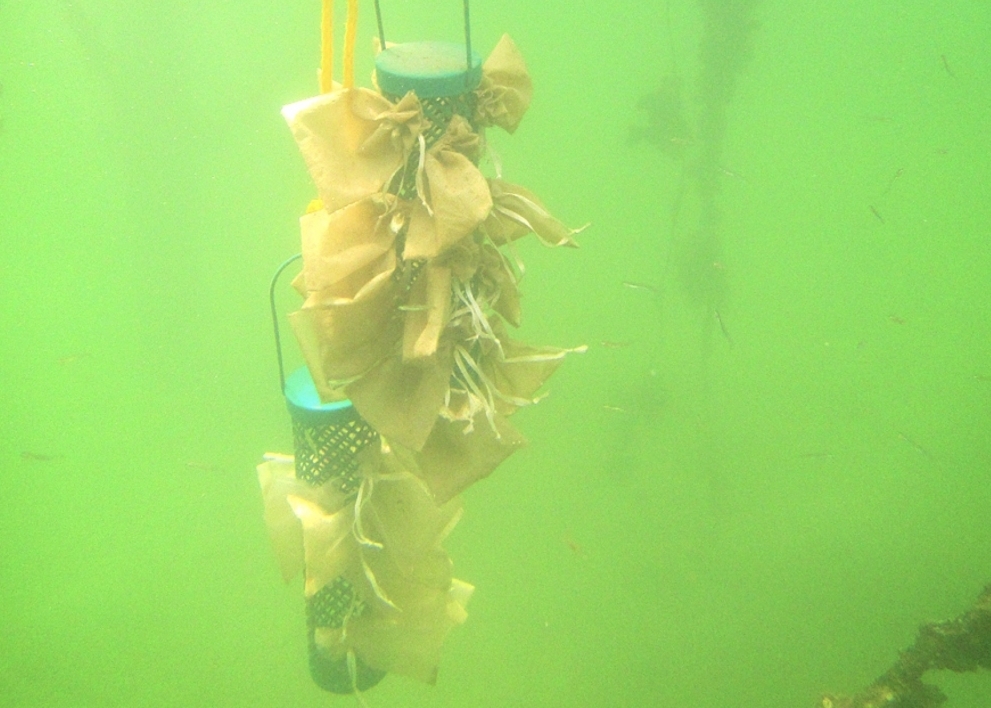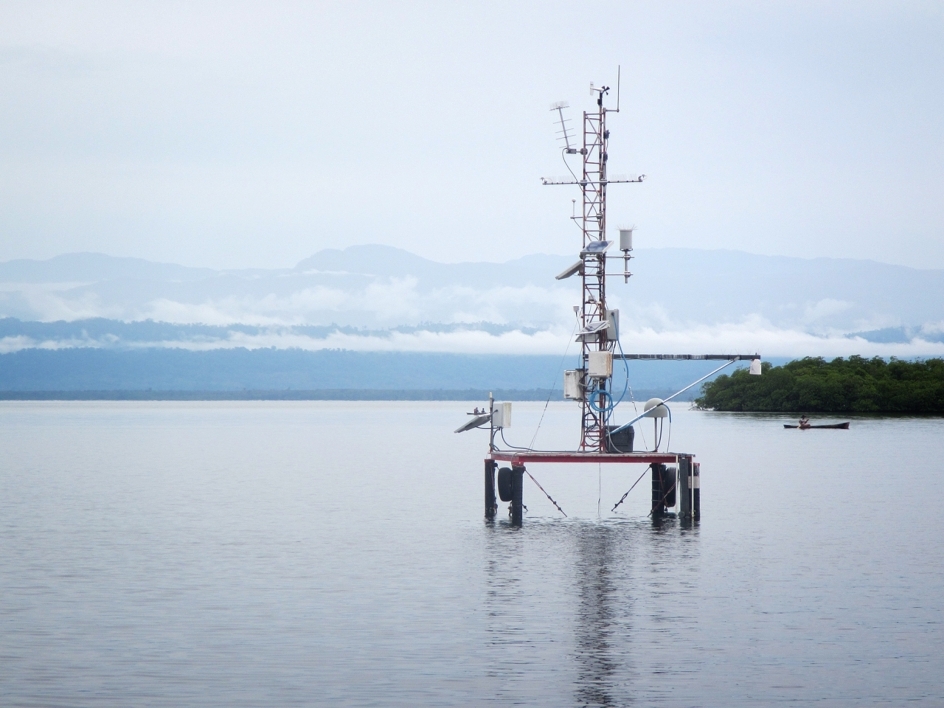ASU study finds microplastics create new homes for microbes in the Caribbean

In this study, different types of commonly used plastics were cut into microsize pieces before being deployed in the ocean. Photo by Kassandra Dudek
With 5 trillion pieces of plastic in the oceans, the dynamics of marine environments are shifting in ways that are yet to be discovered. Over time, discarded plastics such as sandwich bags and flip-flops have degraded into small particles, called microplastics, which are less than 5 millimeters long. Kassandra Dudek, doctoral student at Arizona State University's School of Life Sciences and former Smithsonian Tropical Research Institute (STRI) fellow, looked at how marine microbial communities colonize microplastics in Panama.
She took six common plastic types found in most household items, like the plastics found in water bottles and milk cartons, and cut them into tiny pieces before submerging them in the tropical waters of Almirante Bay, at STRI's Bocas del Toro Research Station. Since Panama acts as a catch basin for marine debris in the Caribbean due to its geography and interaction with oceanic currents, it's a prime location to study plastic pollution.
"The major goal of the study was to assess differences among plastic types, and I wanted to ensure these plastics were also environmentally relevant," said Dudek, a doctoral student in School of Life Sciences Professor Susanne Neuer's lab. "Consumer items found in everyday households are the plastics polluting our beaches and oceans. It is estimated that roughly 4.8 to 12.7 million tons of plastic enter the marine environment annually."
After a month and a half, she noted that marine bacteria were not picky about the surfaces where they chose to settle. They formed biofilms — buildups of bacteria — on all plastic types and used them as artificial reefs. This created "plastispheres" — a type of ecosystem found on human-made plastic environments.
However, some diatoms, which are photosynthetic microalgae, did exhibit a preference for plastic type. Research has shown that hydrocarbon-degrading bacteria, or bacteria that may be capable of degrading plastics, can be associated with diatoms. This dynamic may ultimately prove convenient, as it could potentially promote the degradation of microplastics.
"All the plastic types harbored diatom communities because the plastics are like tiny reefs that provide surface for the diatoms to grow on," said Neuer, senior principal investigator and researcher with the Biodesign Institute's Center for Fundamental and Applied Microbiomics. "It was interesting that we found significant differences in the diatom communities on the different plastic types, and some diatoms were unique to certain plastic types.
"Knowing how these plastic-adhered communities differ as a result of plastic polymer type has some interesting consequences," Neuer said. "It turns out that certain bacteria are associated with these diatoms, and those are capable of degrading plastic or other environmental contaminants associated with plastics. If certain diatoms are exhibiting a preference for certain plastic types, they may also selectively recruit these contaminant-degrading bacteria to the plastics’ surface, which might enhance the plastic’s degradation."
"I wish to further explore this diatom-hydrocarbon degrading bacteria relationship and assess whether diatoms help to recruit hydrocarbon degrading bacteria to a plastic's surface," Dudek said.
Dudek speculated that microplastics could also serve as a vehicle for toxic and disease-causing organisms. These contaminated microplastics could potentially be dragged from the coasts to the open oceans via currents, to be swallowed by fish or sink and affect the benthic communities on the ocean floor, but much research remains to be done regarding the role microplastics play in the transportation of pathogens.
"Only about 1% of marine plastic debris is recovered at the ocean's surface, meaning the other 99% likely either sinks or is consumed by marine organisms," Dudek said. "I am currently exploring the role microplastic biofilms have in a microplastic's degradation and sinking capacity in different marine environments."
This is the first study of its kind carried out in the coastal waters of Panama.
The research findings are published in Limnology and Oceanography Letters.
Members of the research team are affiliated with ASU's School of Life Sciences, ASU Biodesign Institute's Center for Fundamental and Applied Microbiomics, and the Smithsonian Tropical Research Institute. Research was funded by United States Agency for International Development (USAID) Global Development Research program.
In 2009, the Smithsonian Institution joined ASU in an innovative education and science partnership aimed at sustaining biodiversity on Earth. This affiliation was created to acquire and share technology, education and outreach, and interdisciplinary research innovations in: social systems; ecosystem services; sustainability; biodiversity and genetics; and alternative energy. The School of Life Sciences leads this endeavor with the Smithsonian Tropical Research Institute in Panama.
More Science and technology

ASU-led space telescope is ready to fly
The Star Planet Activity Research CubeSat, or SPARCS, a small space telescope that will monitor the flares and sunspot activity…

ASU at the heart of the state's revitalized microelectronics industry
A stronger local economy, more reliable technology, and a future where our computers and devices do the impossible: that’s the…

Breakthrough copper alloy achieves unprecedented high-temperature performance
A team of researchers from Arizona State University, the U.S. Army Research Laboratory, Lehigh University and Louisiana State…



